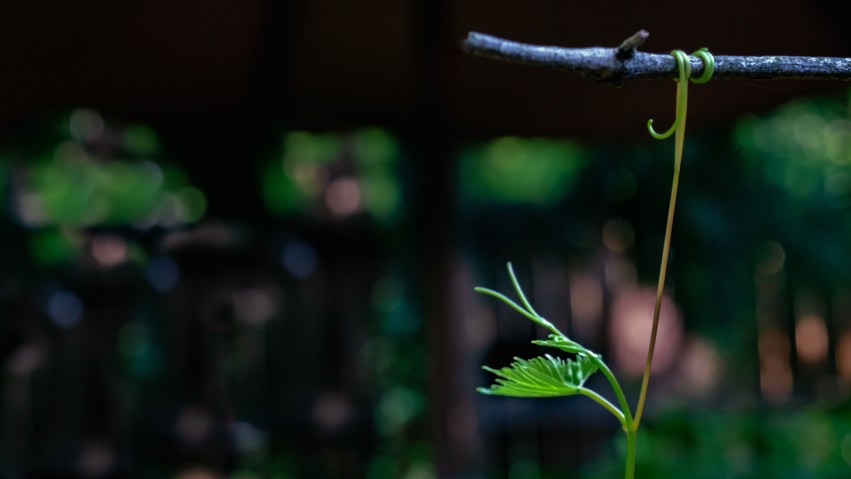From The American Gardener by William Cobbett:
“There are many different sorts of grapes, that grow in the woods, climb the trees, cover some of them over, and bear and ripen their fruit. How often do we meet with a vine, in the autumn, with Grapes, called chicken grapes, hanging on it from every bough of an oak or some other timber-tree! This grape resembles, as nearly as possible, what is, in England, called the Black cluster; and, unquestionably, only wants cultivation to give it as good a flavour.”
This is the third of four posts featuring two grapevines growing in my garden. For the first post and more on the series, see Tales of Two Grapevines (1 of 4). For the second post, see Tales of Two Grapevines (2 of 4).
I crammed a few extra photos into this post, having decided after playing around in Lightroom that some of these grapevine images look great in black and white, so I’m working on that for the final post in the series instead of splitting these color images between two posts.
On March 24 and April 21, I swooped into a nearby pharmacy and got my first and second Covid-19 vaccinations, so as of May 5 was considered “fully vaccinated” according to the CDC guidelines. While I’ve not attended any rock concerts or orgies (!!) yet, it’s been nice to get out a bit and not feel alarmed at the prospect of being in the vicinity of other human beings. Visiting a garden center seemed like going to an oasis at this point, and with another trip or two, I’ll have completed flowery acquisitions for the neglected garden I added nothing to when the pandemic first hit.
I managed to avoid going to any physical stores since February 2020, having decided early on I’d try not to be another disease vector and have everything delivered. And though I’ve gotten a bit spoiled by placing grocery store orders online and waiting for bags of food plop on my front porch, it was nevertheless a pleasant experience to do something as mundane as grocery shopping on a lovely spring day. I donned my trusty dinosaur mask …

… and headed off with a long list of whatnots to pick up. Entering the grocery store felt like a bit of sensory overload; for someone who studies colors and shapes and lines, there sure are a lot of them in your average market — and they’re especially intense when you haven’t seen them for over a year. Color, especially, kept distracting me; I briefly wished I had brought my camera with me, then I thought maybe posing the tomatoes for a photograph would be frowned upon.
Having become something of an online grocery shopping expert and critic, I have to point out that buying groceries online — while certainly convenient — is so linear and stale in its web design that it completely misses the boat on a key shopping experience: browsing! The tech guy in me has always imagined it could be a lot more captivating, like allowing you to zoom up and down the aisles of a virtual reality version and pick stuff off shelves with your VR fingers. Instead, all you get is lists and tiny pictures that vaguely resemble what you’re buying, and you miss out on the spontaneity of stumbling across something you didn’t know you wanted.
Such was my experience today in the frozen foods aisle. I was barreling toward frozen veggies and frozen pizzas, when the word “Tillamook” caught the corner of my eye. I had forgotten about Tillamook ice cream for over a year, and stopped my cart so hard its wheels actually squealed and I pulled a partial donut. Behind the glass door, I found glorious Waffle Cone Swirl, threaded throughout with caramel so fabulous it actually glows. The only reason I’m eating dinner tonight is to have a big blob of this ice cream for dessert. (Their cheeses are excellent also, especially when they’re on sale.) Am I a product photographer now? 🙂

I get ice cream, you get grapevines … sorry (not sorry). Here are the last of the Catawba Grapevine color photos; I’ll post the black-and-white versions in a few days.









Occasionally I like to take pictures of just the tendrils, for some reason. These are from the Concord Grapevine. As you may be able to tell from the photo, the hooks shown in the second image tried to snatch the camera from my hands, a fact which may or may not be true.


Here are the rest of the Catawbas.





Thanks for reading and taking a look!






































